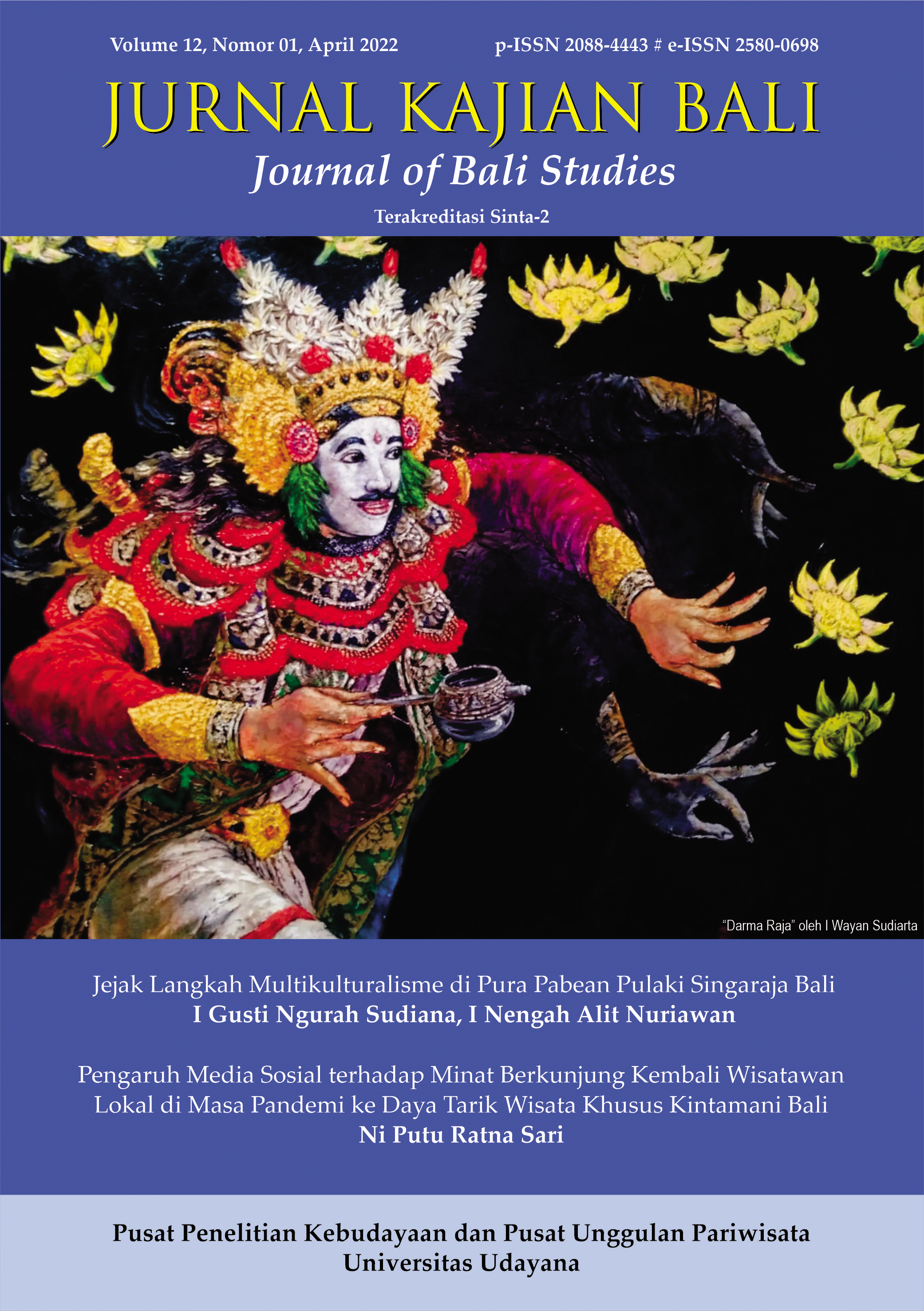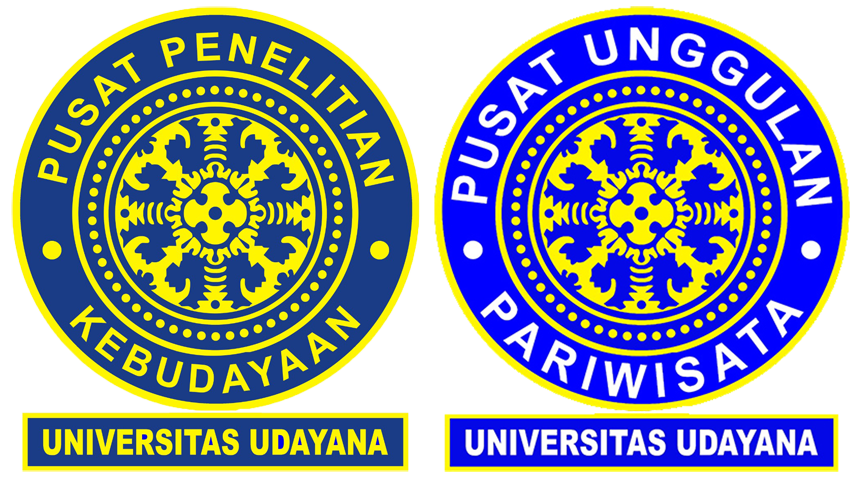Teens’ Perspective on the Utilization of Public Parks in the City of Gianyar Bali: An Hypothetical Model Based on Grounded Theory
Abstract
Nowadays referred to as the Digital Generation, teenagers tend to be more individualistic and have their own preferences when it comes to spaces for their social interactions. By taking up several cases of public parks in the City of Gianyar, Bali, this study investigated the level of teens’ knowledge about the meaning of city parks with the aim that the results can be a basis for developing a hypothetical model for the utilization of these urban spaces in a more focused and beneficial manner for all users. As a qualitative study employing principles of grounded theory and an exploratory approach, the focus was on data collected from an online questionnaire. Content analysis of this data showed that teens’ knowledge about the city parks is generally quite good. However, their understanding is low about the importance of the utilization of city parks for their social and psychological benefit
Downloads
References
Bolisani, E. and Bratianu, C. (2018). The Elusive Definition of Knowledge. In: Emergent Knowledge Strategies. Knowledge Management and Organizational Learning, vol 4. Springer, Cham. https://doi.org/10.1007/978-3-319-60657-6_1
Carr, S., Francis, M., Rivlin, L.G., and Stone, A.M. (1992). Public Space. Cambridge University Press.
Carmona, M., Heath, T., Oc, T., and Tiesdell, S. (2010). Public Places Urban Spaces: The Dimensions of Urban Design, Second Edition. Architectural Press.
Corbin, J. M. and Anselm, S. (2007). Basics of Qualitative Research: Techniques and Procedures for Developing Grounded Theory. 3rd Edition. SAGE Publications, Inc.
Creswell, J. W. (2013). Qualitative Inquiry and Research Design: Choosing Among Five Approaches. SAGE Publications, Inc.
Daradjat, Z. (1994). Remaja: Harapan dan Tantangan. Ruhama.
Dimock, M. (2019). Defining Generations: Where Millennials end and Generation Z Begins? https://www.pewresearch.org/fact-tank/2019/01/17/where-millennials-end-and-generation-z-begins/
Dwiputra, D. and Ardani, N. A. (2017). Preferensi Masyarakat dalam Memilih Karakteristik Taman Kota Berdasarkan Motivasi Kegiatan. ProsidingTemu Ilmiah IPLBI, hal. E 061-66. https://doi.org/10.32315/ti.6.e061
Dolby, N. (2014). The future of empathy: Teaching the Millennial Generation. Journal of College & Character, vol. 15, pp. 39-44.
Ghani, N., Mansor, M. and Zakariya, K. (2018). Gen Z’s Activities and Needs for Urban Recreational Parks. Planning Malaysia: Journal of the Malaysian Institute of Planners, vol. 16, no. 2, pp 141-152.
Gehl, J. (2010). Cities for People. Island Press.
Gehl, J. (2011). Life Between Buildings: Using Public Space. Island Press.
Groat, L. N. and Wang, D. (2002). Architectural Research Methods. John Wiley and Sons.
Hakim, R. (1993). Unsur Perancangan dalam Arsitektur Lansekap. Bina Aksara.
Hurlock, E. B. (1992). Developmental Psychology: a Life-span Approach. Tata McGraw-Hill Publishing.
Lang, J. T. (2005a). Urban Design: A Typology of Procedures and Products, Illustrated with over 50 Case Studies. Architectural Press.
Lang, J. T. (2005b). Urban Design: A Typology of Procedures and Products (First Edition). Elsevier/Architectural Press. Vol. 9031.
Latifiyan, M., and Salavati, M. (2015). Environment Designing Considering the Needs of Youth According to Abraham Maslow’s Needs Case Study. African Journal of Business Management, vol. 9, no. 1, pp. 8-17.
McAlister, A. (2009). Teaching the Millennial Generation. American Music Teacher, vol. 59, pp. 13-15.
Ngesan, M. R., Karim, H. A., Zubir, S. S., and Ahmad, P. (2013). Urban Community Perception on Nighttime Leisure Activities in Improving Public Park Design. Procedia -Social and Behavioral Sciences, vol. 105, pp. 619-631.
Pratama, H. C. (2012). Cyber Smart Parenting: Kiat Sukses Menghadapi dan Mengasuh Generasi Digital. Visi Anugerah Indonesia.
Pratomo, A., Soedwiwahjono, and Miladan, N. (2019). Kualitas Taman Kota sebagai Ruang Publik di Kota Surakarta berdasarkan Preferensi dan Persepsi Pengguna. Desa-Kota, vol. 1, no. 1, pp. 84-95.
Prihutami, D. (2008). Ruang Publik Kota yang Berhasil. Skripsi Sarjana Arsitektur Universitas Indonesia.
Rabe, N. S., Osman, M. M., and Abdullah, M. F. (2017). Assessment on Public Perception towards the Development of Malaysia Youth Cities. Advanced Science Letters, vol. 23, no. 7, pp. 6102-6105.
Rahmawati, A. and Suharso, S. (2015). Faktor Determinan Konsep Diri Siswa Kelas VIII di SMP Negeri se-Kota Semarang. Indonesian Journal of Guidance and Counseling: Theory and Application, vol. 4, no. 1, pp. 30-36. https://journal.unnes.ac.id/sju/index.php/jbk/article/view/7487
Reber, A. S. and Reber, E. S. (2010). Kamus Psikologi. Pustaka Pelajar.
Santrock, J. W. (2018). Life-Span Development. McGraw-Hill Education.
Shaftoe, H. (2012). Convivial Urban Spaces: Creating Effective Public Places. Earthscan.
Shirvani, H. (1985). The Urban Design Process. Van Nostrand Reinhold Company.
Sladek, S. and Grabinger, A. (2014). Gen Z: The First Generationof the 21st Century has Arrived! http://xyzuniversity.com/wp-content/uploads/2014/02/GenZ_ Final.pdf
WHO. (1999). Programming for Adolescent Health and Development/Report of a WHO/UNFPA/UNICEF Study Group on Programming for Adolescent Health. WHO technical report series, No. 886. Geneva, World Health Organization.
Wijoyo, H. et al. (2020). Generasi Z and Revolusi Industri 4.0. CV. Pena Persada.

This work is licensed under a Creative Commons Attribution 4.0 International License.



















